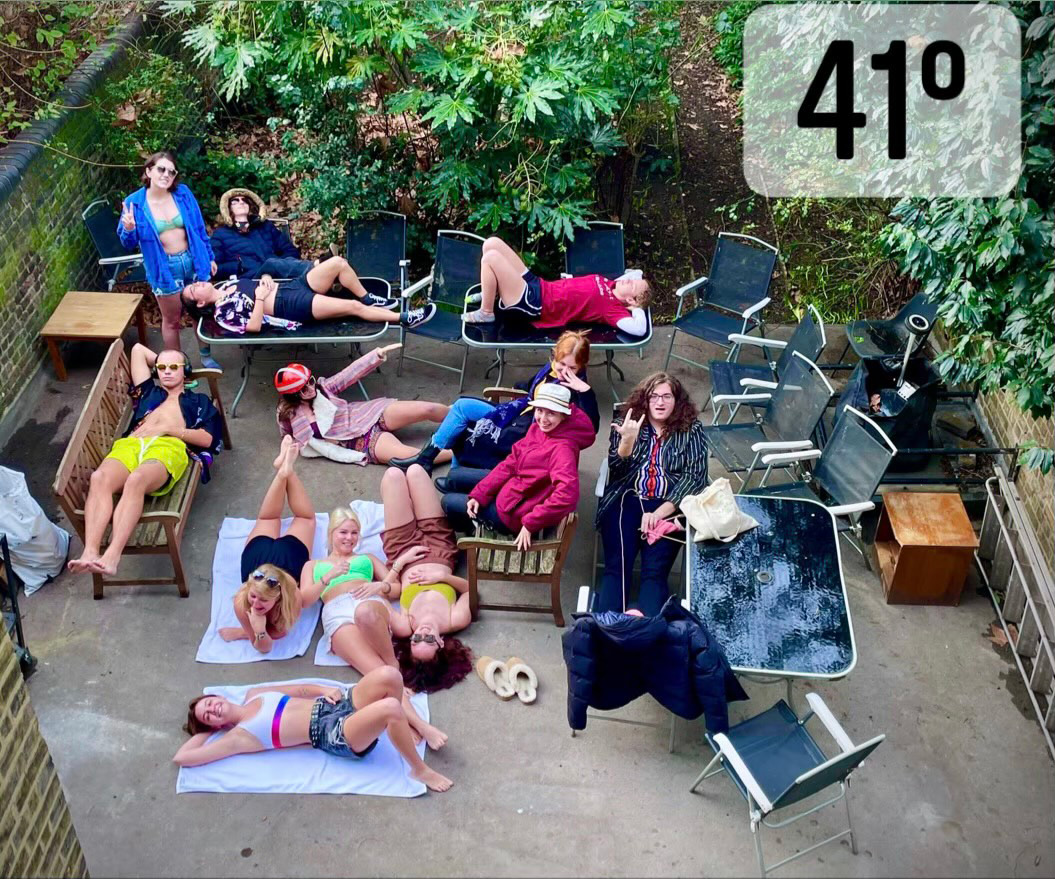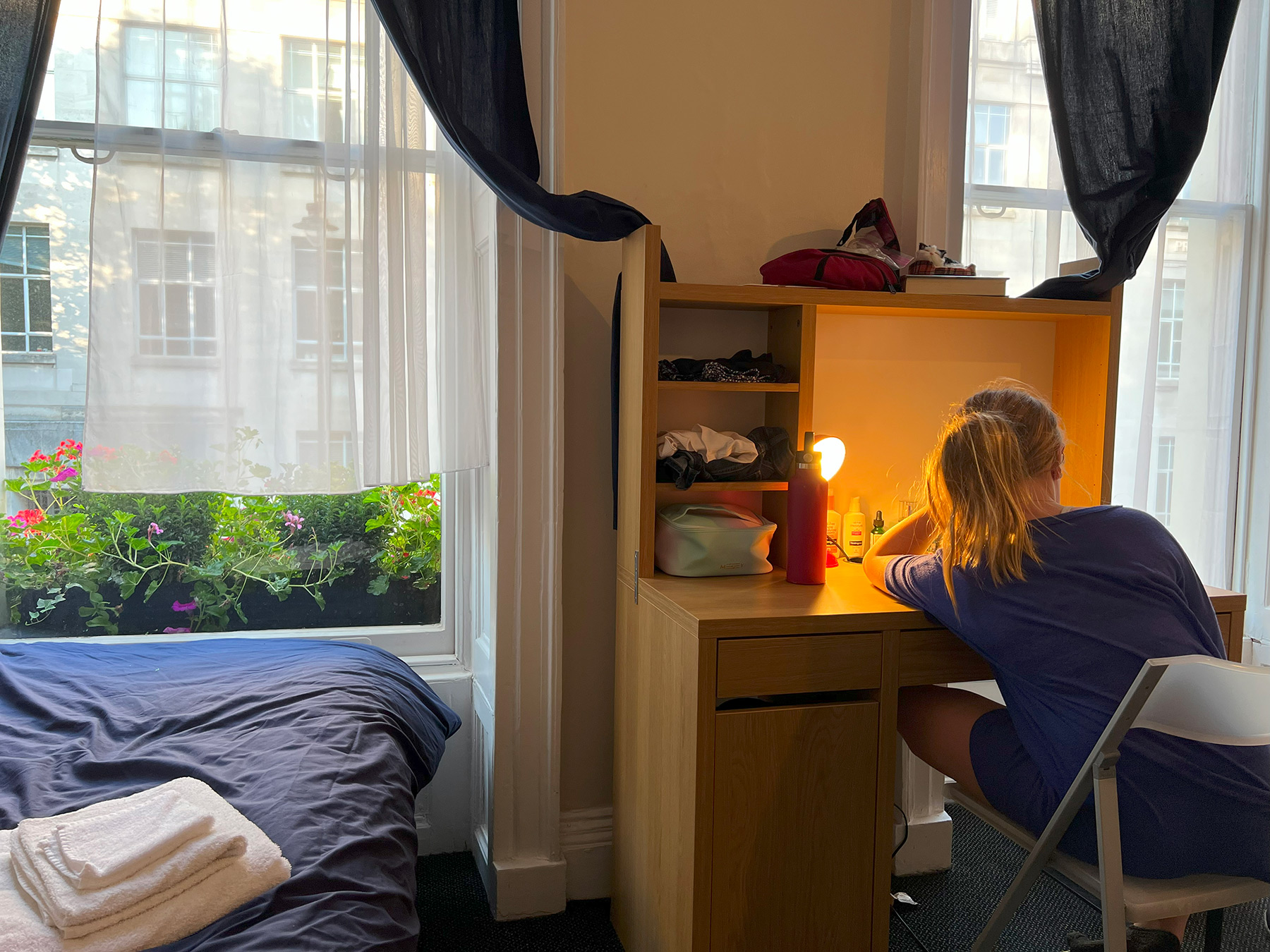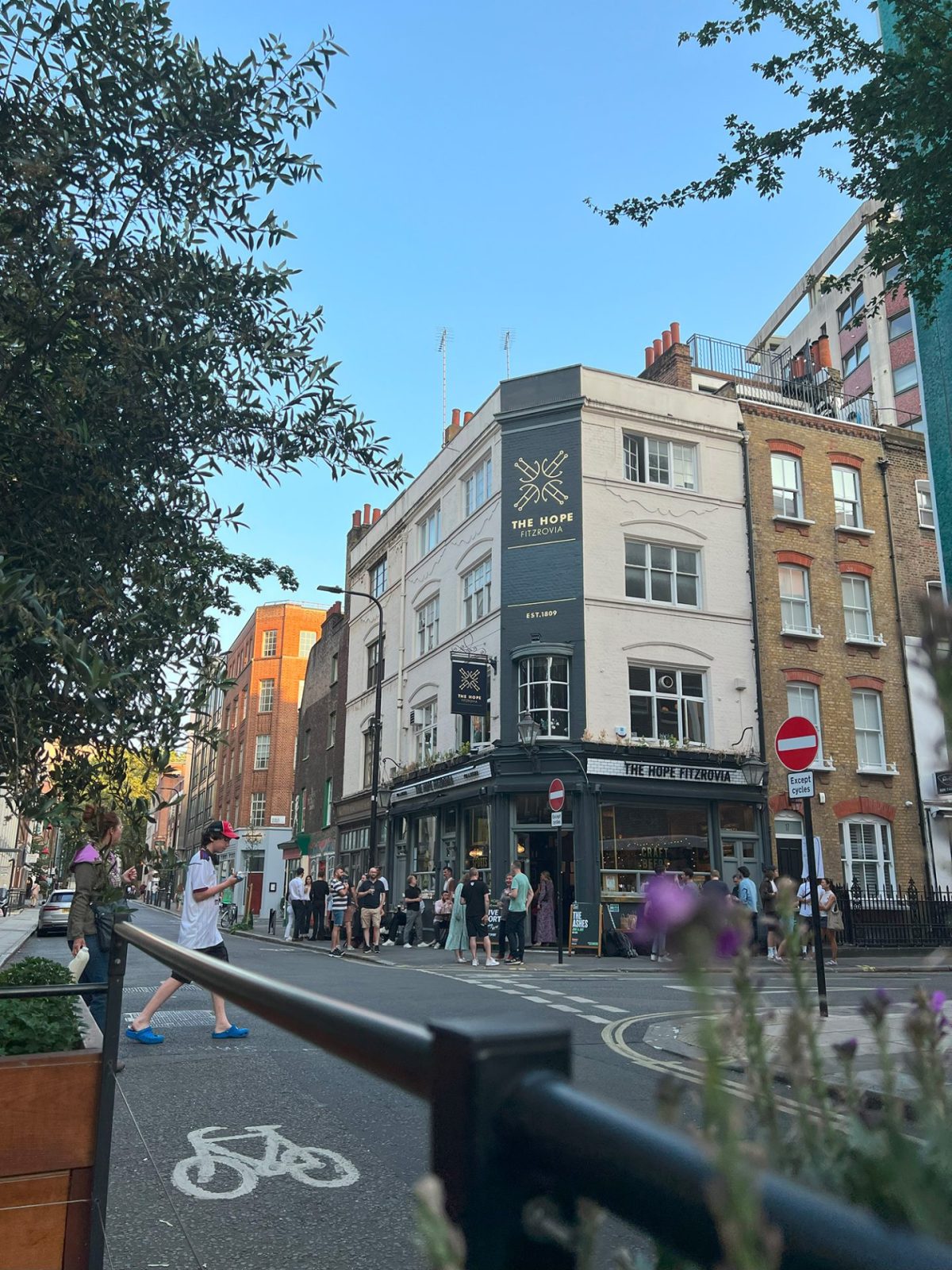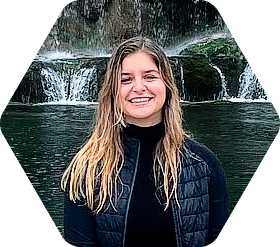The heart of the Eckerd College study abroad program
Since 1970, when Eckerd College leased a 200-year-old Georgian row house from the Bedford Estates, over 2,000 students have called the Centre home while completing courses led by Eckerd and other London-based faculty.
The Centre is centrally located in downtown London at 35 Gower Street. It’s steps away from The British Museum, the Royal Academy of Dramatic Art Studios as well as many parks, restaurants, pubs, London Underground metro stops and more! Trafalgar Square, The National Gallery, Covent Garden and Soho are just 15-20 minutes away by foot.
Rising sophomores, juniors and seniors are all eligible and welcome to apply.
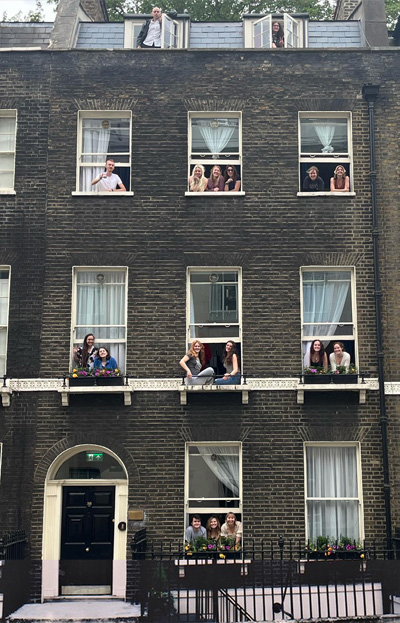
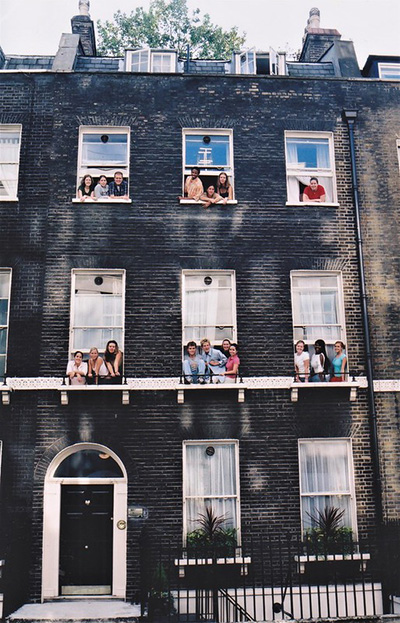
Drag the blue bar sideways to enjoy a comparison of photographs from 2002 and 2022.

Courses
Led by Eckerd faculty
- The British Seminar (Fulfills a Global Perspective)
- Additional course dependent on academic area of expertise
Led by London faculty
- Introduction to Contemporary British Politics – Social Sciences Area Requirement
- London in Literature – Humanities Area Requirement, Comparative Literature Course
- Theatre in London – Arts Area Requirement
- British Art History – Arts Area Requirement
More about the neighborhood and curriculum
Location
Bloomsbury
Home to the Eckerd College London Study Centre, this neighborhood, full of beautiful trees and parks, just five minutes walk from the bustling West End, is London’s premier location for many leading national and foreign educational institutions.
The British Museum, University of London, British Library and University College London are complemented by many prestigious overseas teaching organizations which have made Bloomsbury their location of choice.
The area is strategically situated, and offers extensive public transportation by underground and bus to all parts of London, the suburbs, and Heathrow airport.
In medieval times, Bloomsbury was the site of a manor house, ‘Blemondsisberi’ owned by William Blemond. The property passed to Edward III in 1390, and then to the stewardship of Carthusian monks. During the dissolution of the monasteries instigated by Henry VIII, possession again returned to the Crown before the estates was to the Lord Chancellor, Thomas Wriothesley.
The area began to be developed in the 17th Century when Bloomsbury Square was completed, setting a precedent for subsequent development. Bedford Square, completed in 1783 is the capital’s finest Georgian garden square, widely regarded as one of England’s greatest contributions to the development of European town planning.
Bloomsbury became extremely fashionable during the 18th Century, when many imposing townhouses were built for families who spent the week in town and the weekend relaxing in the country. The British Museum, founded in 1753 to display the world’s and nation’s cultural heritage, is an international centre for study and research. Since the recent construction of the Great Court to celebrate the millennium, the museum now houses London’s largest covered public square.
Complementing the primarily residential architecture of Bloomsbury, more public buildings began to appear in the 19th Century, most notably The University College London, established in 1826; the first of a number of University of London facilities to be built in the area which confirmed Bloomsbury as the scholastic centre of the capital.
The Bloomsbury Group, an intellectual circle of friends, flourished in the 1920s and included the artists Duncan Grant and Vanessa Bell, the writers Virginia Woolf and Lytton Strachey and the art critics Roger Fry and Clive Bell. Bertrand Russell, Aldous Huxley, and T.S. Eliot were also associated with the group as was John Maynard Keynes, one of the most influential economists of the 20th Century.
Special thanks to MB&A and The Bedford Estates.
Faculty
The program is led by a different Eckerd College faculty member each semester. This Director lives at the centre with the students and teaches (at least) one course, the British Seminar. Other courses are taught by British faculty.
Curriculum
The British Seminar is a required course for all students. It provides students with a good historical and cultural overview of Britain. One week of travel during the semester is devoted to the content of this course.
- World-renowned galleries, such as the National Gallery, become the classroom in Art History: British Painting 1970-1960.
- Compare American and English writers in Anglo-American Perspectives in London in Literature.
- In Introduction to Contemporary British Politics, students visit the Houses of Parliament and the Inns of Court.
- Approximately ten plays are seen as a part of Theatre in London.
Cost
Financial aid for students participating in the London program remains intact, with the exception of work study; students have full benefit of federal, state, and institutional aid.
While the specific cost of the program varies every year, there are general costs that apply each year. The specific cost of the program will be announced in the fall of each year.
- Eckerd College tuition
- Student activity fee
- Technology fee
- Meal plan
- Miscellaneous personal expenses, including airfare
- London Comprehensive Fee: $2,000





